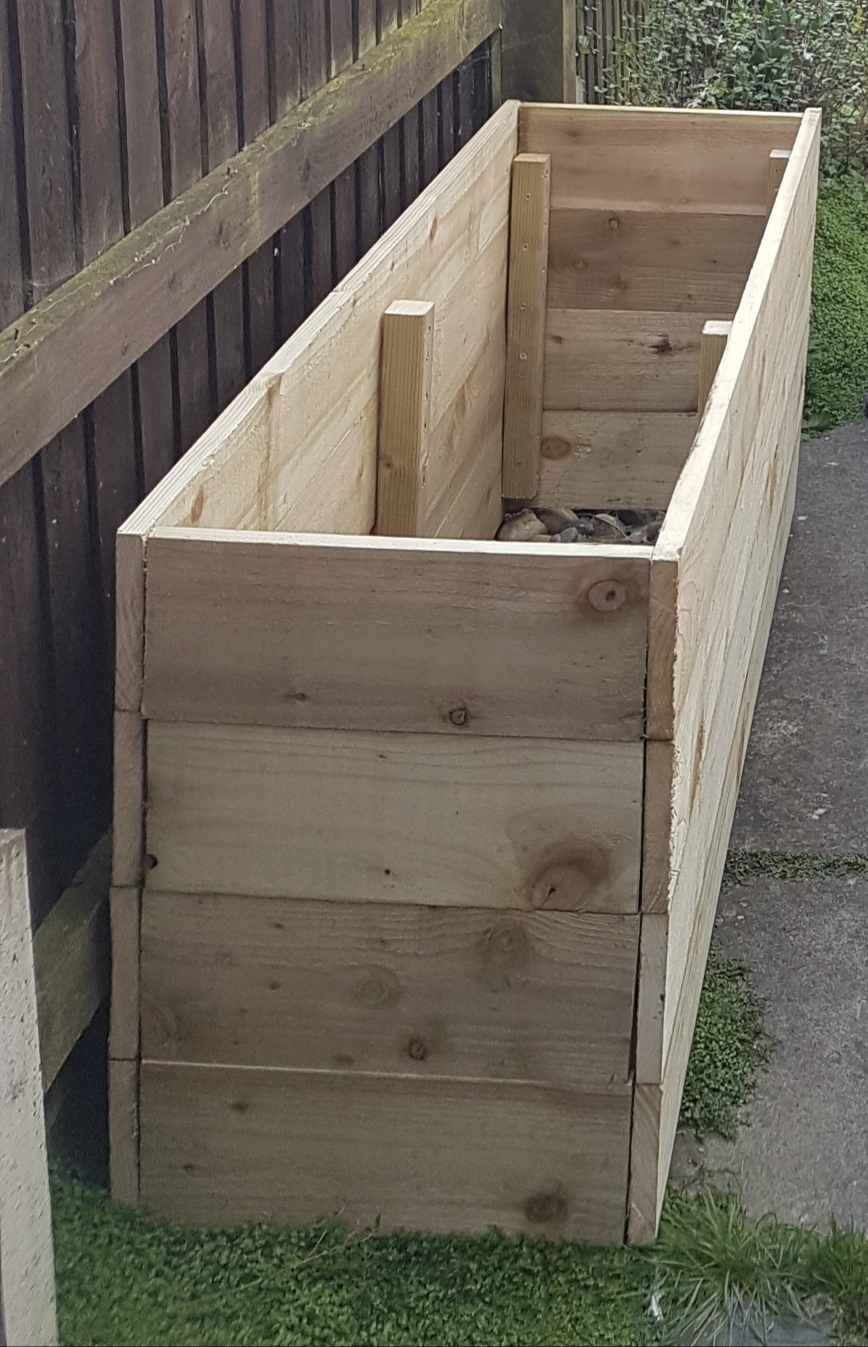This Forum will close on Wednesday 27 March, 2024. Please refer to the announcement on the Discussions page for further detail.
Large DIY wooden planters - plant recommendations and drainage/false bottom
I've made two large wooden planters out of gravel boards. Each are 150cm long and 40cm wide, and 60cm deep.

We had a surplus of top soil and compost to use (quickly), hence the build. I just need to line them with pond liner (with drainage holes).
However, I'm concerned about filling each completely with the soil-compost mix because of a) drainage, and b) weight.
Do I:
a) build a false bottom halfway up with more of the wood (although I'm worried it won't hold the weight); or
b) fill the bottom with something to help the drainage? (I've found some ideas online - e.g. packing peanuts, empty plastic bottles - but would need a lot so that's not an option. One idea online was to use a couple of large plastic collanders, or upturned buckets/pots with holes drilled in them.)
EDIT: Also, some recommendations for plants suitable for planters would be welcomed! in a sheltered north-facing position, so gets some sun in the afternoons. We have a couple of salvias I was going to put in them, but they seem happy in their pots and obs need v good drainage, so these might not be suitable.
Would welcome people's thoughts/experience.

We had a surplus of top soil and compost to use (quickly), hence the build. I just need to line them with pond liner (with drainage holes).
However, I'm concerned about filling each completely with the soil-compost mix because of a) drainage, and b) weight.
Do I:
a) build a false bottom halfway up with more of the wood (although I'm worried it won't hold the weight); or
b) fill the bottom with something to help the drainage? (I've found some ideas online - e.g. packing peanuts, empty plastic bottles - but would need a lot so that's not an option. One idea online was to use a couple of large plastic collanders, or upturned buckets/pots with holes drilled in them.)
EDIT: Also, some recommendations for plants suitable for planters would be welcomed! in a sheltered north-facing position, so gets some sun in the afternoons. We have a couple of salvias I was going to put in them, but they seem happy in their pots and obs need v good drainage, so these might not be suitable.
Would welcome people's thoughts/experience.
0
Posts
You could certainly use anything you have for a layer on the bottom - cardboard and newspaper are good, especially if you don't have a compost bin for that. If you're wanting permanent planting in it, branches/stems, wood in general, would be better shredded, so that the drop in level that would occur when material is breaking down, won't affect the level at the top. For annual planting, that's less important because you would add more compost/soil every year.
Old pots, plastic milk cartons or anything similar, would also be fine, but it's worth adding a layer of something permeable over them to prevent too much of the growing medium falling through. If you have landscape fabric, or netting, or even old jumpers, that will do the job well. I do that with large containers if they're going to have planting which doesn't require huge depth
It also depends on your location and climate as to how you fill them - in cooler areas it won't dry out as quickly as it would in hot, dry ones, so that will affect your plant choices. If you have some idea of what you want to grow, it's easier to make suggestions. Some will need better drainage than others, but that's where containers can be easier to manage as you can tailor the medium to suit.
I live in west central Scotland - not where that photo is...
It seems to be open to the ground though, so not sure why drainage holes would be required in the lining. There's no need to have holes in the sides, if that's what is meant, and you wouldn't put any plastic on the bottom.
My raised beds are all lined, and open to the ground. Drainage is therefore not a problem in any way.
I live in west central Scotland - not where that photo is...
I put timber lats cross the bottom, with gaps, and lined with plastic along the sides and bottom, but punctured holes in the bottom to allow drainage. I was planting a climbing hydrangea which can be thirsty so wanted some water retention.